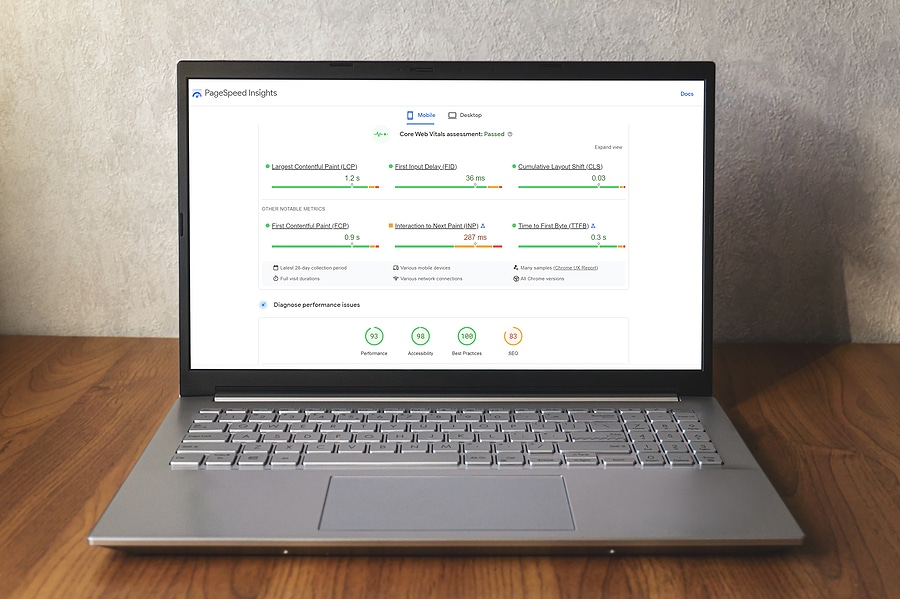
How to Build a Content Strategy for Your Healthcare Practice
By Socius Staff
October 4, 2022
Google search receives over a billion health-related searches every day, according to The Telegraph.
As patients look to the internet for healthcare resources and answers about where they should go for medical care, it becomes important for medical providers to invest in digital marketing—especially original content that speaks to your particular expertise.
Healthcare professionals within your organization can share their expertise online in blogs, videos, and social media posts. However, it’s important to understand these forms of content marketing don’t always help practitioners build a local presence (which is often key to local growth).
What Are Some Marketing Strategies for Healthcare?
With such large search volumes, creating and publishing original content should be your main marketing focus. But it’s important to know this strategy can quickly become a juggling act when trying to provide value to ideal customers, build a name for the practice, and reach the vast audience looking for reliable health information online.
Not to mention, developing engaging and accurate healthcare content can be time consuming.
Whether you’re an urgent care center or dental practice, it’s unlikely there’s an in-house content team ready to tackle the job. And, it takes significant time to design and implement a holistic content marketing strategy before ever producing a single piece of content. For those just starting out, you’re often left guessing what works best.
That said, content marketers with a defined strategy feel they are successful 78% of the time, while those without a strategy say they’re unsuccessful 81% of the time.
Luckily, practices do not need to reinvent the wheel to build a successful strategy. With these five steps, you can confidently conceive of, run, and assess your content marketing using a laser-focused approach that extends reach and drives patients.
5 Steps to Building a Healthcare Content Marketing Strategy
1. Identify Your Goals
Some practices want to build authority. For example, the Cleveland Clinic has successfully parlayed its content into a global brand, reaching 12 million readers per month.
But the majority of practices want to target local patients and grow through local traffic, leads, and appointments booked. If these are your goals, you want to make sure patients find your website the moment they need a provider or have questions. To meet that goals, you’ll want to use a conversational tone, identify the right keywords and search terms, accumulate online reviews, and build digital links locally.
2. Get to Know Your Audience
Once you’ve identified your content marketing goals, you need to identify your target audience. Instead of aiming your content efforts at everyone, develop a buyer persona around your audience’s specific challenges and start thinking of topics and solutions that are in line with their interests. You’ll appeal to the 71% of customers that expect a company to personalize their marketing to them. Knowing what triggers a particular search (intent) for your services is a critical piece of developing helpful content for them.
Use your existing customer database to research demographics and identify how prospective patients find your practice. Think about their motivations. You’ll get insight into local SEO practices. For example, do your patients consume content on mobile or desktop? Which channels do they use to find healthcare content? What keywords or phrases are they searching for?
3. Develop Topics Across a Few Large Themes
Content themes serve to structure categories, so your audience can quickly get more information on their favorite topics. They also assist search engines in recognizing and indexing your practice’s expertise.
Performing keyword searches and uncovering popular, shareable topics published by similar businesses can help refine some common themes, identify content opportunities, or offer more in-depth expertise.
You’ll be able to leverage better brand authority in a few areas as well as generate ongoing topic ideas for your chosen themes. Ultimately, you’ll join the 30% of marketers who have a consistent vision to keep your content focused.
4. Develop Content for All Stages of the Marketing Funnel
Your content strategy lies at the intersection of your subject-matter expertise and your audience’s challenges. Once you’ve identified topics that encompass both, develop content ideas that serve potential patients:
- At the top of the funnel, when patients are newly aware of a problem and seeking more information.
- In the middle of the funnel, when they’re seeking information on particular solutions and providers in their area.
- At the bottom of the funnel, as they decide whether to make an appointment with you or someone across town.
The different stages will impact the topics and formats you publish. Short, skimmable infographics or blog posts work best at the top of the funnel for patients who are just beginning to seek information about a condition. For example, for an orthodontist, this content may help parents research common orthodontic problems in preteens to understand what’s happening with their child.
Later in the funnel, those same parents might appreciate a more comprehensive guide to the different treatments available and the benefits and costs of each.
5. Optimize Your Content
Great content needs to reach its audience. So once it’s published, don’t forget to promote it and assess its success. To publicize your content, plan for social media posts based on subtopics within your main piece of content. Decide on the best channels for promotion. Consider paid ads, publishing to your own channels, and partner promotion.
With your content goals in mind, test and optimize your content for the best outcome. Identify ideal times to republish content. A tool like Google Analytics (Soon to be GA4) can help you see when you’re driving the most traffic to your posts so you can repeat your success.
Use A/B testing tools to “split test” e-mail subject lines, tweets, and social captions to identify the best-performing calls to action. For e-mail, you’ll send two batches with different copy. For social captions, publicize your post multiple times to see if your performance changes. Note what kind of content performs best and watch your ROI increase.
This can be…a lot. Especially when you’re not a marketing expert or don’t have an in-house team to handle your content marketing strategy. That’s where partnering with digital marketing experts who have experience in your industry can help.
Partner With Socius to Maximize Your ROI on Content Marketing
A content marketing strategy helps healthcare practices reach new patients and build credibility in the community. The ROI on content marketing for the healthcare industry is high, as healthcare professionals are uniquely positioned to share a wealth of information, building trust with future patients.
Check out our marketing services for healthcare teams to learn how we can help you grow your practice today.


